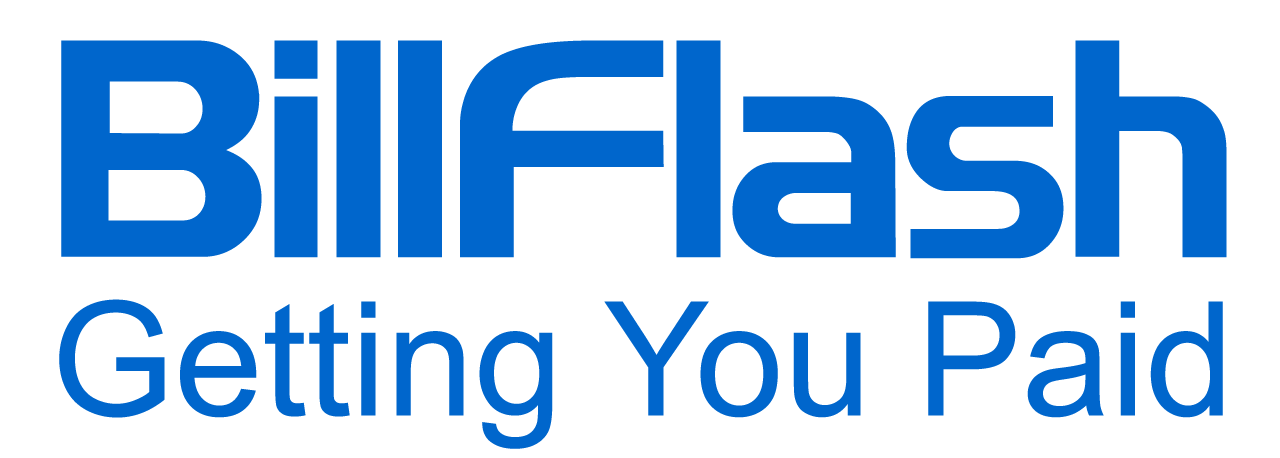Learn how all-in-one software for medical billing can help you improve efficiency, reduce costs, and enhance your patient payment experience.
Running a small healthcare or dental practice has never been more challenging. With limited staff, rising costs, and a long list of staff responsibilities, it's easy to feel overwhelmed. Outdated or disjointed medical billing software only adds to the chaos, leaving practices struggling to keep up. With practices reporting increased financial and administrative difficulties—94% according to recent data—more providers are caught in a daily struggle, watching their staff navigate multiple systems, calling patients asking for payments, and spending countless hours on administrative duties instead of patient care.
The traditional approach of using separate systems for billing, payments, and collections is no longer sustainable in today's fast-paced healthcare environment. However, the smartest small practices are finding a solution: all-in-one software for medical billing. By streamlining their billing processes, these practices save time, reduce errors, and improve their bottom line.
The Problem With Piecemeal Billing Systems
The reality of medical billing in many small practices is certainly not ideal. Practices often use multiple systems—one for insurance billing, another for patient statements, another for payment processing, and sometimes a separate system for collections. This fragmentation in medical billing software creates a variety of inefficiencies that directly impact the bottom line:
- Inefficiencies in Workflows: Staff spend hours switching between platforms, manually transferring patient data, and resolving errors. They could spend this time more effectively on patient care.
- Data Silos: Fragmented systems don't always communicate well, leading to duplicate entries, lost information, and costly mistakes.
- Slower Cash Flow: Errors and delays in billing processes hinder how quickly practices collect payments.
The impact of these fragmented systems goes beyond inconvenience. They undermine a practice’s bottom line and its ability to provide quality care. With 80% of medical bills containing errors, mainly due to manual data entry mistakes across multiple systems, this is more than a financial burden. It's also a drain on staff morale and patient satisfaction.

What All-in-One Medical Billing Software Offers
All-in-one medical billing software helps small practices streamline operations by integrating all billing-related functions into a single platform. But what does “all-in-one” really mean? At its core, all-in-one software for medical billing includes:
- Billing: Simplified tools that deliver statements via mail, email, or text, with options for digital payments.
- Payments: Multiple channels, including in-office, online, and mobile options such as Apple Pay and Google Pay.
- Collections: Provider-controlled collections services for unpaid accounts.
Contrary to what some providers may believe, all-in-one software for medical billing doesn't mean complicated—it means simplified. Practices that are open to integrated billing solutions often see immediate improvements, such as:
- Efficient Workflows: All medical billing tasks are managed in one place, saving staff time and reducing frustration.
- Fewer Errors: Automated medical billing tools reduce the risk of mistakes that slow down payments.
- Faster Payment Cycles: Patients can pay instantly through convenient digital options.
- Reduced Staff Hours: With fewer manual tasks, providers and staff can focus more on patient care.
Real Revenue Gains for Small Practices
Switching to an all-in-one software for medical billing is more than a convenient solution—it's a move that produces financial results that can be measured. Here's how it can turn around your small practice's bottom line for the better:
- Faster Collection Cycles: Integrated systems eliminate delays caused by manual follow-ups or data entry errors.
- Higher Patient Payment Rates: With options like text or email reminders, online payment portals, and even flexible financing options, patients are more likely to pay on time.
- Lower Overhead Costs: Automation reduces the need for additional staff or outsourcing.
- Minimal Training Requirements: Staff can quickly learn to use all-in-one software for medical billing instead of learning how to use multiple systems.
Reduced training time and costs allow small practices to allocate resources more effectively. Additionally, improved cash flow from faster payment processing supports better financial planning for the practice. Lower administrative overhead, achieved by integrating medical billing functions, reduces staff costs, and higher collection rates through automated follow-ups minimize revenue loss.
As a small practice spending hours reconciling payments across multiple systems, you can now use tools within one software to identify bottlenecks, optimize revenue cycles, and ensure predictable income streams. This is particularly crucial in 2025, with medical costs projected to rise by 8% for the Group market and 7.5% for the Individual market. Efficient medical billing systems will help manage these increases by improving revenue collection and reducing expenses.

Must-Have Features of an All-in-One Platform
When choosing an all-in-one software for medical billing, there are several key features to look for:
Upfront Cost Estimates (PreBills)
Facilitate pre-visit billing by sending patients cost estimates via text or email before their appointments. This approach allows patients to understand and manage their financial responsibilities in advance, reducing post-visit billing confusion.
eBills and Mailed Statements With QR Codes
Implement electronic billing to deliver statements promptly via text and email, enabling patients to view and pay their bills online. Combine this with mailed statements that include QR codes, allowing patients to access their bills and make payments quickly by scanning the code with their smartphones. This integration in medical billing software accelerates payment processes and reduces administrative workload.
Multiple Payment Channels
Offer payment options that accommodate various patient preferences. This includes in-office payments, online portals, phone payments, and mobile systems like Apple Pay and Google Pay. In addition, AutoPay can help facilitate automatic recurring payments, making the process more convenient for patients and providers.
Integrated Patient Financing (FlexPay)
Incorporate patient financing solutions such as FlexPay to offer flexible payment plans. This system ensures that providers receive full payment promptly while allowing patients to pay their balances in manageable monthly installments. FlexPay features a quick application process (it takes less than one minute), a 90% approval rate, and an option for an interest-free plan, making healthcare expenses more accessible to patients.
Provider-Controlled Collections Services
This service equips providers with tools to manage collections more effectively. It also enables them to oversee the process and control patient communications. Integrated collection services, like the services offered by BillFlash, allow providers to approve accounts for collection efforts during regular billing reviews. With visibility into all activities and control over write-offs, providers can ensure that recovery specialists treat patients respectfully while using effective methods to recover outstanding balances.
HIPAA Compliance and User-Friendly Dashboards
Ensure that the platform complies with HIPAA regulations to protect patient information. User-friendly dashboards should provide user-friendly navigation and a clear view of patient billing and payment activities. This allows staff to manage operations efficiently and securely.
Unified Platform With Minimal Training Requirements
Adopt all-in-one medical billing software that integrates all billing and payment functions into a single platform. This consolidation reduces the need for multiple software systems, minimizes staff training time, and streamlines administrative processes, leading to increased efficiency and reduced operational costs.
Small practices can streamline their billing process and improve their financial performance by choosing software with these features. These elements ensure that the all-in-one medical billing software remains efficient and compliant with 2025 regulatory changes, including data security and patient privacy requirements.

Why Smart Practices Are Making the Switch Now
Smart practices understand that patients now expect digital conveniences, like text/email bills, mailed statements with QR codes, and online payments. All-in-one medical billing software solutions meet these expectations by offering patient-friendly interfaces and multiple payment options, improving transparency and satisfaction. Here's why smart practices are making the switch now:
Future-Proof Growth
Smart practices choose scalable medical billing software that grows with them, instead of relying on outdated systems that limit efficiency and hinder expansion.
Staffing and Financial Pressures
With rising workforce shortages and tighter margins, automation is no longer optional—it’s essential for easing staff burdens and managing costs.
Meeting Patient Expectations
Today's patients expect greater convenience when it comes to managing healthcare payments. Key features they look for include:
- Digital billing (text and email)
- Paper statements with QR codes for easy payment
- Secure online payment portals
- Transparent, upfront cost estimates
These options simplify the payment process and improve the overall patient experience. For instance, sending a text bill or a mailed statement with a scannable QR code makes paying fast and effortless. Online portals appeal to more patients, while price transparency builds trust and strengthens patient relationships, encouraging timely payments.
Practices that implement these changes gain a significant competitive advantage. For example, BillFlash's mailed bills and eBills via text or email address these expectations effectively and have been shown to reduce days to payment from 20 to 9 when used together.
Work Smarter, Not Harder
The switch to all-in-one software for medical billing reflects a strategic choice by smart practices to address today's healthcare challenges while preparing for tomorrow's opportunities. By adopting scalable, automated, and patient-friendly tools, these practices improve efficiency, reduce financial pressures, and meet patient expectations while positioning themselves for long-term growth. For small practices ready to make this change, solutions like BillFlash offer an all-in-one approach to billing, payments, and collections, customized to their unique needs.
Ready to transform your billing process? Schedule a demo with BillFlash today to explore our all-in-one medical billing software, designed to help small practices thrive.

